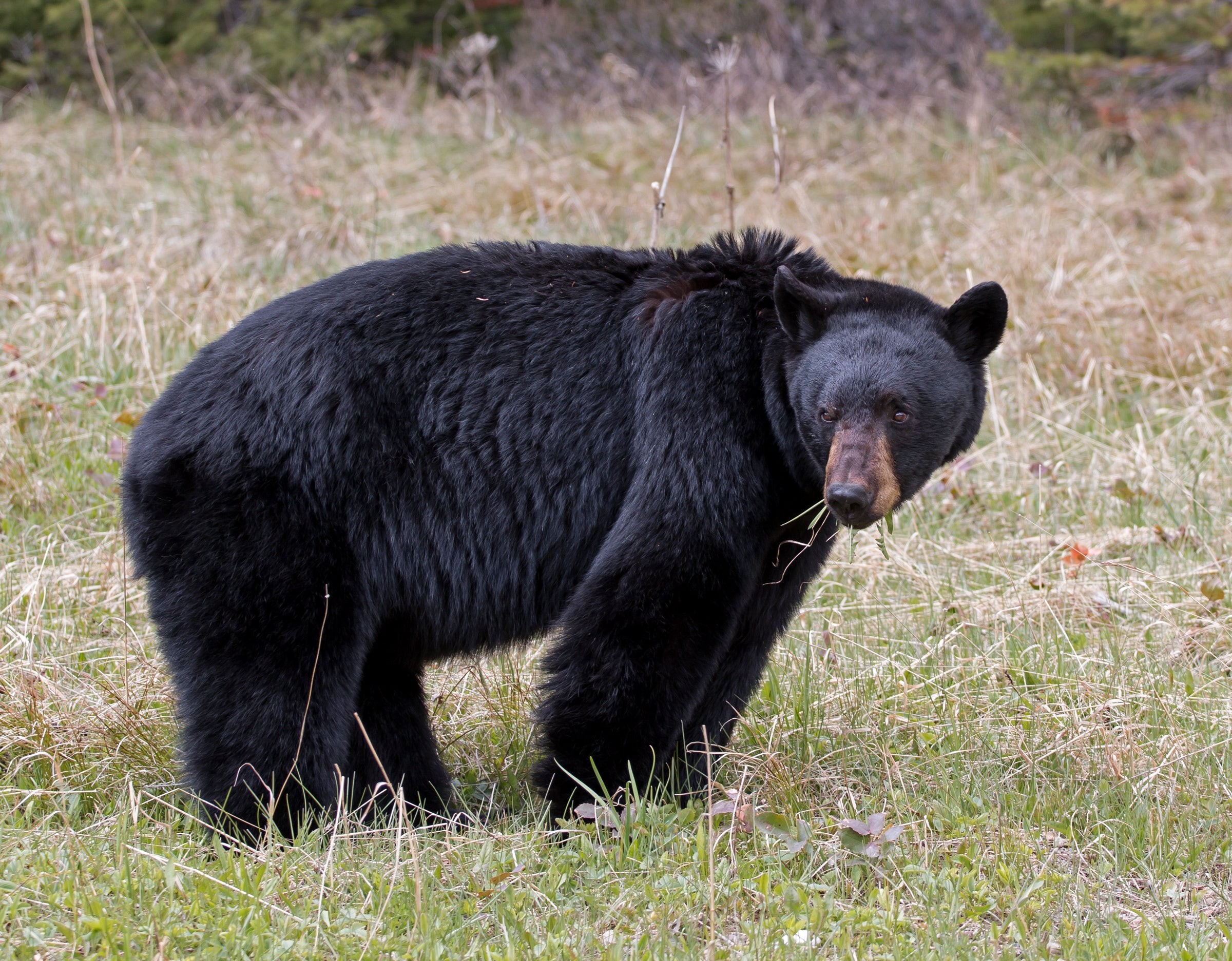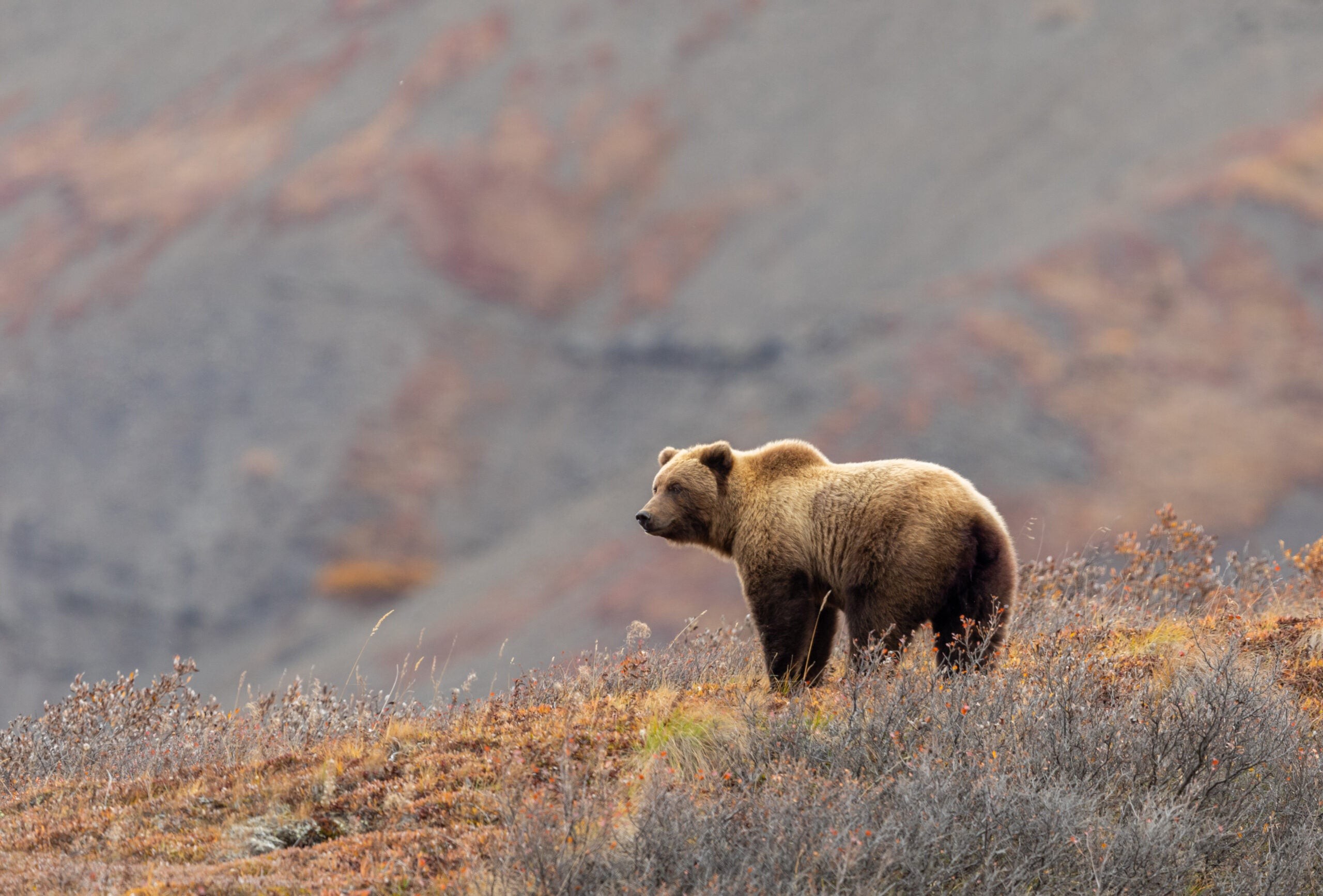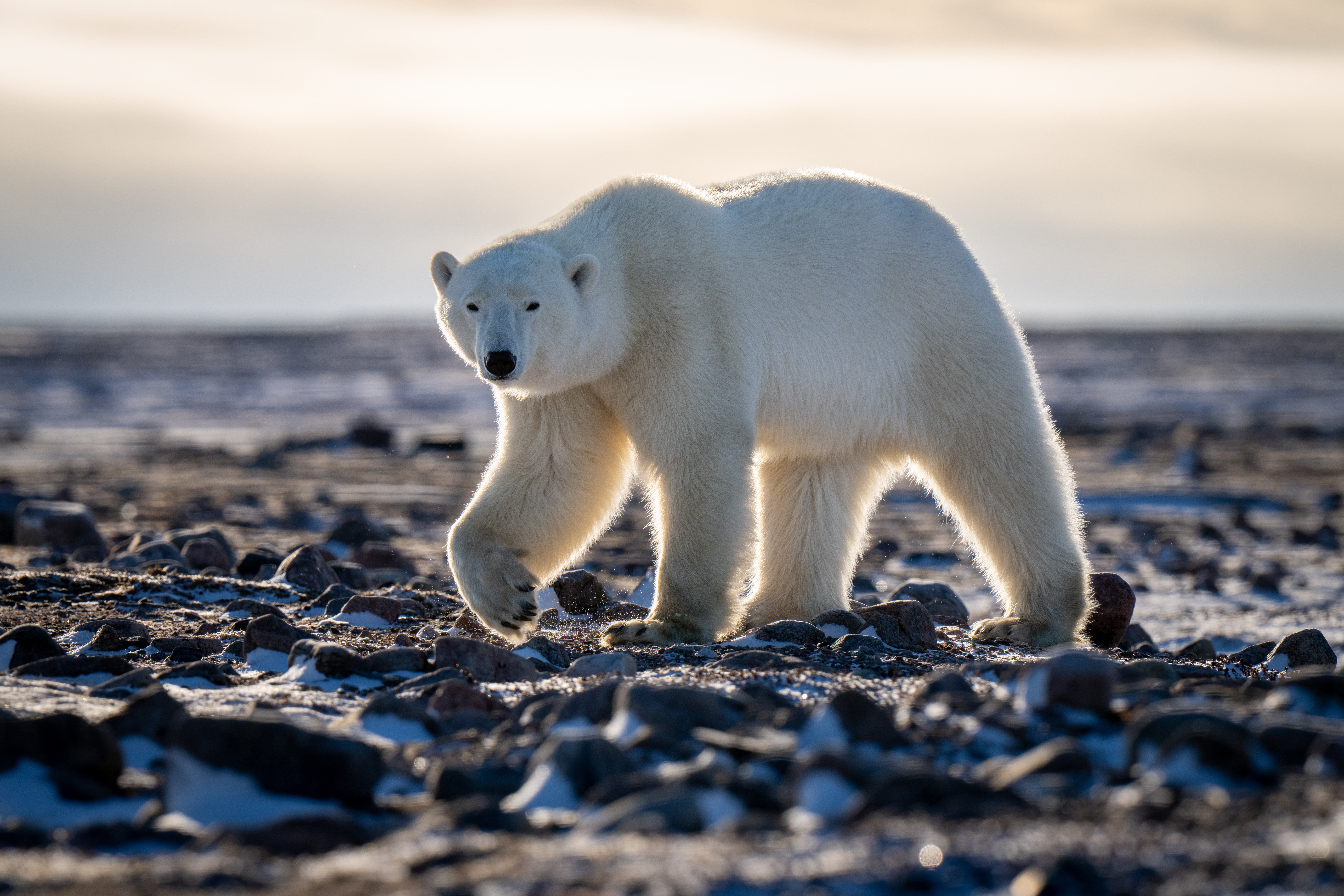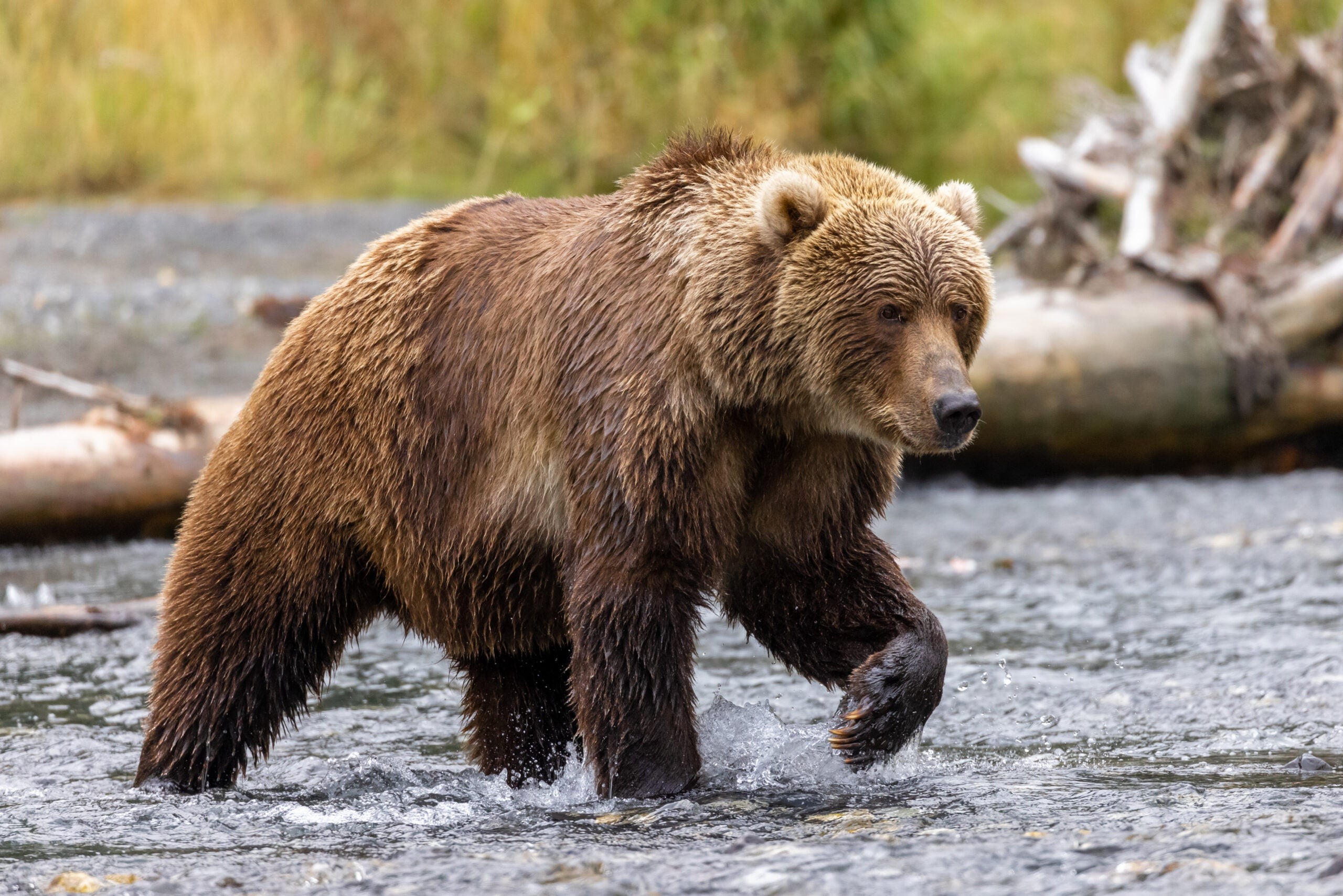How much does a bear weigh is a question that many people ask, reflecting their fascination with these powerful creatures. At HOW.EDU.VN, we delve into the weights of different bear species, offering a comprehensive look at their sizes and the factors that influence them. Understanding bear weights helps in appreciating their physical capabilities and adapting safety measures in their habitats.
1. Understanding Bear Weight: An Overview
Bears, with their imposing presence, have always captivated humans. These creatures, found in various habitats across North America and beyond, exhibit a wide range of sizes and weights. From the relatively smaller black bear to the massive polar bear, understanding their weights involves considering species, age, location, and seasonal changes.
1.1. The Fascination with Bear Size and Strength
Bears symbolize raw power and resilience. Their weight is an indicator of their physical strength and survival capabilities. Historical accounts, like the discovery of Neanderthals hunting bears long ago, highlight the long-standing human interest in these animals.
1.2. General Weight Range of North American Bears
In North America, bears range from 100 pounds to over 1,500 pounds. This broad spectrum highlights the diversity among bear species and individual variations within those species. Let’s look at average weights by type.
1.3. Factors Influencing a Bear’s Weight
Several factors determine how much a bear weighs:
- Species: Different species have different average weights.
- Age: Bears grow larger as they age.
- Gender: Males are typically heavier than females.
- Location: Bears in areas with abundant food tend to be larger.
- Time of Year: Bears gain weight in preparation for hibernation and lose weight during hibernation.
2. North American Bear Species and Their Weights
North America is home to four primary bear species: black bears, inland grizzlies, coastal brown bears, and polar bears. Each species has distinct characteristics and weight ranges.
2.1. Black Bears: The Most Common Species
Black bears (Ursus americanus) are the most widespread bear species in North America. They are known for their adaptability and can be found in various habitats, from forests to mountains.
2.1.1. Average Weight of Black Bears
Male black bears typically weigh between 125 to 500 pounds, while females range from 100 to 300 pounds. Bears can significantly gain or lose weight depending on food availability and the season.
2.1.2. Record-Breaking Black Bear Weights
The largest black bear ever recorded weighed over 900 pounds. Such giants are rare but demonstrate the potential size of these bears under optimal conditions.
2.1.3. Locations with the Largest Black Bears
Alaska and Canada are known for their large black bears, thanks to abundant food sources and fewer predators. Pennsylvania also holds a notable place in record books for large black bear entries.
2.2. Inland Grizzly Bears: Icons of the Wild
Inland grizzly bears are known for their distinctive shoulder hump and aggressive nature. They inhabit the northern Rockies of Western Canada, inland Alaska, and parts of the Greater Yellowstone Ecosystem.
2.2.1. Typical Weight Range for Inland Grizzlies
Male inland grizzlies generally weigh between 600 to 1,000 pounds, while females average between 300 and 700 pounds. Their weight can vary based on location and food sources.
2.2.2. Diet and Weight of Inland Grizzlies
Grizzlies are omnivorous, consuming a variety of foods including large prey animals like moose and elk, as well as nuts, berries, and insects. Their diet significantly impacts their weight.
2.2.3. Where to Find the Biggest Inland Grizzlies
The flatter inland portions of Alaska tend to produce larger inland grizzlies. Mountain bears often struggle to find as much nutrition as those in flatter areas.
2.3. Coastal Brown Bears: Giants of the Shoreline
Coastal brown bears, also known as Alaskan brown bears, are closely related to inland grizzlies but are considered a distinct subspecies due to differences in diet and behavior.
2.3.1. Average Weight of Coastal Brown Bears
Male coastal brown bears typically weigh from 800 to 1,200 pounds, while females generally weigh between 400 to 700 pounds.
2.3.2. The Impact of Salmon on Coastal Brown Bear Weight
Coastal brown bears famously gorge on salmon during the summer, packing on weight for the winter. This rich diet contributes to their larger size compared to inland grizzlies.
2.3.3. Locations Known for Massive Coastal Brown Bears
Kodiak Island, Alaska, and the surrounding islands are known for producing the largest coastal brown bears. The largest recorded wild male weighed over 1,600 pounds.
2.4. Polar Bears: Arctic Kings
Polar bears are the largest of all North American bear species. They are adapted to survive in the Arctic regions of Alaska, Canada, Greenland, Scandinavia, and Russia.
2.4.1. Typical Weight of Polar Bears
Male polar bears commonly exceed 1,500 pounds, while females typically top out around 700 pounds.
2.4.2. Polar Bear Habitats and Their Influence on Weight
Polar bears live in the Arctic regions, where they hunt seals and other marine mammals. Their diet and habitat contribute to their large size.
2.4.3. Conservation and Hunting Regulations for Polar Bears
Only native people are currently allowed to hunt polar bears, primarily for subsistence purposes. Conservation efforts are crucial to protect these magnificent creatures.
3. Detailed Look at Black Bear Weight
Black bears are the most adaptable and widespread bear species in North America. Their weight varies widely depending on several factors, including diet, habitat, and time of year.
3.1. Factors Influencing Black Bear Weight
The weight of a black bear is influenced by its age, gender, location, and the availability of food resources. Seasonal changes also play a significant role, with bears gaining weight in the fall to prepare for hibernation and losing weight during the winter months.
3.2. Average Weight of Male Black Bears
Male black bears typically weigh between 125 to 500 pounds. However, in regions with abundant food, such as Alaska and parts of Canada, males can reach weights exceeding 600 pounds.
3.3. Average Weight of Female Black Bears
Female black bears are generally smaller than males, with an average weight range of 100 to 300 pounds. Like males, their weight can fluctuate based on the season and food availability.
3.4. Seasonal Weight Variations
Black bears undergo significant weight changes throughout the year. In the spring, after emerging from hibernation, they are at their lightest. As the year progresses, they consume large quantities of food to build fat reserves for the winter, often gaining several pounds per day.
3.5. Diet and Weight Gain
Black bears are opportunistic omnivores, feeding on a variety of foods, including berries, nuts, insects, fish, and small mammals. In areas where human food sources are accessible, such as campgrounds and residential areas, bears may consume these readily available foods, leading to increased weight gain.
3.6. Regional Differences in Black Bear Weight
Black bears in different regions of North America exhibit variations in weight due to differences in habitat and food availability. For example, bears in the southeastern United States tend to be smaller than those in the Pacific Northwest.
3.7. Record-Breaking Black Bears
The largest black bear ever recorded weighed over 900 pounds. These record-breaking bears are often found in areas with plentiful food and minimal hunting pressure.
3.8. How Habitat Affects Black Bear Size
The habitat in which a black bear lives plays a critical role in determining its size and weight. Bears in areas with dense forests, abundant berry patches, and access to salmon streams tend to grow larger than those in more marginal habitats.
3.9. The Role of Human Interaction
Human activities can also influence black bear weight. Bears that have access to human food sources, such as garbage and improperly stored food, may become habituated to these resources and gain weight more rapidly than those that rely solely on natural foods.
3.10. Conservation Implications
Understanding the factors that influence black bear weight is essential for effective conservation management. By ensuring that bears have access to sufficient natural food resources and minimizing human-wildlife conflict, conservationists can help maintain healthy and sustainable black bear populations.
4. Exploring Inland Grizzly Bear Weight
Inland grizzly bears are a powerful and iconic symbol of the North American wilderness. Their weight is a key indicator of their health, survival capabilities, and the overall ecological conditions of their habitat.
4.1. Factors Influencing Inland Grizzly Weight
Several factors influence the weight of inland grizzly bears, including age, gender, location, food availability, and seasonal changes. Understanding these factors is crucial for assessing the health and status of grizzly bear populations.
4.2. Average Weight of Male Inland Grizzlies
Male inland grizzly bears typically weigh between 600 to 1,000 pounds. In some areas, such as Alaska, males can exceed 1,200 pounds due to abundant food resources.
4.3. Average Weight of Female Inland Grizzlies
Female inland grizzly bears are generally smaller than males, with an average weight range of 300 to 700 pounds. Like males, their weight can fluctuate based on the season and food availability.
4.4. Seasonal Weight Variations
Inland grizzly bears undergo significant weight changes throughout the year. In the spring, after emerging from hibernation, they are at their lightest. As the year progresses, they consume large quantities of food to build fat reserves for the winter, often gaining several pounds per day.
4.5. Diet and Weight Gain
Inland grizzly bears are omnivores, feeding on a variety of foods, including berries, nuts, insects, fish, and large mammals such as moose and elk. The availability of these food resources directly impacts their weight gain.
4.6. Regional Differences in Inland Grizzly Weight
Inland grizzly bears in different regions of North America exhibit variations in weight due to differences in habitat and food availability. For example, bears in the Greater Yellowstone Ecosystem may have different weights compared to those in Alaska.
4.7. Record-Breaking Inland Grizzlies
The largest inland grizzly bear ever recorded weighed over 1,600 pounds. These record-breaking bears are often found in areas with plentiful food and minimal hunting pressure.
4.8. How Habitat Affects Inland Grizzly Size
The habitat in which an inland grizzly bear lives plays a critical role in determining its size and weight. Bears in areas with diverse food sources, such as salmon streams, berry patches, and open meadows, tend to grow larger than those in more marginal habitats.
4.9. The Role of Human Interaction
Human activities can also influence inland grizzly bear weight. Bears that have access to human food sources, such as garbage and improperly stored food, may become habituated to these resources and gain weight more rapidly than those that rely solely on natural foods.
4.10. Conservation Implications
Understanding the factors that influence inland grizzly bear weight is essential for effective conservation management. By ensuring that bears have access to sufficient natural food resources and minimizing human-wildlife conflict, conservationists can help maintain healthy and sustainable grizzly bear populations.
5. Understanding Coastal Brown Bear Weight
Coastal brown bears, also known as Alaskan brown bears, are among the largest bears in the world. Their weight is a crucial indicator of their health, survival capabilities, and the overall ecological balance of their coastal habitat.
5.1. Factors Influencing Coastal Brown Bear Weight
Several factors influence the weight of coastal brown bears, including age, gender, location, food availability, and seasonal changes. Understanding these factors is essential for assessing the health and status of coastal brown bear populations.
5.2. Average Weight of Male Coastal Brown Bears
Male coastal brown bears typically weigh between 800 to 1,200 pounds. In some areas, such as Kodiak Island, males can exceed 1,600 pounds due to the abundance of salmon.
5.3. Average Weight of Female Coastal Brown Bears
Female coastal brown bears are generally smaller than males, with an average weight range of 400 to 700 pounds. Like males, their weight can fluctuate based on the season and food availability.
5.4. Seasonal Weight Variations
Coastal brown bears undergo significant weight changes throughout the year. In the spring, after emerging from hibernation, they are at their lightest. As the year progresses, they consume massive quantities of salmon to build fat reserves for the winter, often gaining several pounds per day.
5.5. The Impact of Salmon on Weight Gain
The availability of salmon is the most critical factor influencing the weight of coastal brown bears. During the salmon spawning season, bears can consume up to 100 pounds of salmon per day, leading to rapid weight gain.
5.6. Regional Differences in Coastal Brown Bear Weight
Coastal brown bears in different regions of Alaska exhibit variations in weight due to differences in salmon availability. Bears in areas with abundant salmon runs tend to grow larger than those in areas with fewer salmon.
5.7. Record-Breaking Coastal Brown Bears
The largest coastal brown bear ever recorded weighed over 1,600 pounds. These record-breaking bears are often found on Kodiak Island, where salmon runs are particularly abundant.
5.8. How Habitat Affects Coastal Brown Bear Size
The habitat in which a coastal brown bear lives plays a critical role in determining its size and weight. Bears in areas with access to salmon streams, berry patches, and coastal meadows tend to grow larger than those in more marginal habitats.
5.9. The Role of Human Interaction
Human activities can also influence coastal brown bear weight. Bears that have access to human food sources, such as garbage and improperly stored food, may become habituated to these resources and gain weight more rapidly than those that rely solely on natural foods.
5.10. Conservation Implications
Understanding the factors that influence coastal brown bear weight is essential for effective conservation management. By ensuring that bears have access to sufficient salmon and minimizing human-wildlife conflict, conservationists can help maintain healthy and sustainable coastal brown bear populations.
6. Polar Bear Weight: The Arctic Giants
Polar bears are the largest land predators in the world, adapted to survive in the harsh Arctic environment. Their weight is a crucial indicator of their health, survival capabilities, and the overall ecological conditions of their habitat.
6.1. Factors Influencing Polar Bear Weight
Several factors influence the weight of polar bears, including age, gender, location, prey availability, and seasonal changes. Understanding these factors is essential for assessing the health and status of polar bear populations.
6.2. Average Weight of Male Polar Bears
Male polar bears typically weigh between 775 to 1,500 pounds. In some areas, males can exceed 1,700 pounds due to abundant seal populations.
6.3. Average Weight of Female Polar Bears
Female polar bears are generally smaller than males, with an average weight range of 330 to 770 pounds. Like males, their weight can fluctuate based on the season and prey availability.
6.4. Seasonal Weight Variations
Polar bears undergo significant weight changes throughout the year. In the spring and summer, they hunt seals on the sea ice, building up fat reserves for the winter. During the winter, when sea ice is at its maximum extent, they continue to hunt but may also experience periods of fasting.
6.5. The Impact of Seal Availability on Weight Gain
The availability of seals is the most critical factor influencing the weight of polar bears. Seals are their primary food source, providing the energy and nutrients needed to survive in the Arctic.
6.6. Regional Differences in Polar Bear Weight
Polar bears in different regions of the Arctic exhibit variations in weight due to differences in seal availability. Bears in areas with abundant seal populations tend to grow larger than those in areas with fewer seals.
6.7. Record-Breaking Polar Bears
The largest polar bear ever recorded weighed over 2,200 pounds. These record-breaking bears are often found in areas with plentiful seal populations.
6.8. How Habitat Affects Polar Bear Size
The habitat in which a polar bear lives plays a critical role in determining its size and weight. Bears in areas with stable sea ice, access to seal breathing holes, and coastal areas with high seal densities tend to grow larger than those in more marginal habitats.
6.9. The Role of Climate Change
Climate change is having a significant impact on polar bear weight. As sea ice declines, polar bears have less access to seals, leading to reduced weight gain and decreased survival rates.
6.10. Conservation Implications
Understanding the factors that influence polar bear weight is essential for effective conservation management. By mitigating climate change and protecting critical polar bear habitats, conservationists can help ensure the survival of these iconic Arctic giants.
7. Comparing Bear Weights: A Summary Table
To provide a clear comparison of the weights of different North American bear species, the following table summarizes the average weight ranges for males and females of each species.
| Species | Male Average Weight (lbs) | Female Average Weight (lbs) |
|---|---|---|
| Black Bear | 125 – 500 | 100 – 300 |
| Inland Grizzly | 600 – 1,000 | 300 – 700 |
| Coastal Brown Bear | 800 – 1,200 | 400 – 700 |
| Polar Bear | 775 – 1,500 | 330 – 770 |




8. Practical Implications of Knowing Bear Weights
Understanding how much does a bear weigh has practical implications for outdoor enthusiasts, conservationists, and researchers. This knowledge can help in making informed decisions about safety, conservation efforts, and ecological studies.
8.1. Safety in Bear Country
Knowing the average weight and size of bears in a particular area can help outdoor enthusiasts take appropriate safety precautions, such as carrying bear spray, storing food properly, and avoiding areas with high bear activity.
8.2. Conservation Management
Understanding the factors that influence bear weight is essential for effective conservation management. By monitoring bear weights and assessing the health of bear populations, conservationists can develop strategies to protect bears and their habitats.
8.3. Ecological Studies
Researchers use bear weight data to study bear behavior, ecology, and population dynamics. This information is valuable for understanding the role of bears in ecosystems and the impacts of environmental changes on bear populations.
8.4. Wildlife Photography
Wildlife photographers often seek to capture images of bears in their natural habitats. Understanding bear behavior and ecology, including their weight and size, is essential for safely and ethically photographing these magnificent animals.
9. The Expertise of HOW.EDU.VN in Wildlife Studies
At HOW.EDU.VN, our team of over 100 Ph.D. experts is dedicated to providing in-depth knowledge and insights into wildlife studies. Our experts cover a wide range of topics, from animal behavior to conservation management, ensuring that our readers receive accurate and reliable information.
9.1. Our Team of Ph.D. Experts
Our team includes experts in various fields, such as zoology, ecology, and conservation biology. Each expert brings a wealth of knowledge and experience to HOW.EDU.VN, ensuring that our content is of the highest quality.
9.2. Areas of Expertise
Our experts specialize in various areas of wildlife studies, including:
- Animal Behavior: Understanding the behavior of animals in their natural habitats.
- Ecology: Studying the interactions between animals and their environment.
- Conservation Biology: Developing strategies to protect endangered species and their habitats.
- Wildlife Management: Managing wildlife populations to ensure their long-term sustainability.
9.3. Commitment to Accuracy and Reliability
At HOW.EDU.VN, we are committed to providing accurate and reliable information to our readers. Our content is thoroughly researched and reviewed by our team of experts to ensure that it meets the highest standards of quality.
10. Addressing Common Questions About Bear Weight
Here are some frequently asked questions about bear weight, answered by our team of Ph.D. experts at HOW.EDU.VN.
10.1. FAQ: Common Questions About Bear Weight
- How much does a black bear typically weigh?
- Black bears typically weigh between 125 to 500 pounds for males and 100 to 300 pounds for females.
- What is the average weight of an inland grizzly bear?
- Inland grizzly bears typically weigh between 600 to 1,000 pounds for males and 300 to 700 pounds for females.
- How much does a coastal brown bear weigh on average?
- Coastal brown bears typically weigh between 800 to 1,200 pounds for males and 400 to 700 pounds for females.
- What is the typical weight of a polar bear?
- Polar bears typically weigh between 775 to 1,500 pounds for males and 330 to 770 pounds for females.
- What factors influence bear weight?
- Factors influencing bear weight include age, gender, location, food availability, and seasonal changes.
- How do bears gain weight?
- Bears gain weight by consuming large quantities of food, building fat reserves for the winter.
- Do bears lose weight during hibernation?
- Yes, bears lose weight during hibernation as they rely on their stored fat reserves for energy.
- What is the largest bear species in North America?
- The largest bear species in North America is the polar bear.
- How can I stay safe in bear country?
- Stay safe in bear country by carrying bear spray, storing food properly, and avoiding areas with high bear activity.
- Where can I learn more about bear conservation?
- You can learn more about bear conservation from organizations like the National Wildlife Federation and the World Wildlife Fund.
11. Connect with Experts at HOW.EDU.VN
If you have more specific questions or need personalized advice, we encourage you to connect with our team of experts at HOW.EDU.VN. Our Ph.D. experts are available to provide guidance and insights on a wide range of topics.
11.1. How to Get in Touch
You can reach us through the following channels:
- Address: 456 Expertise Plaza, Consult City, CA 90210, United States
- WhatsApp: +1 (310) 555-1212
- Website: HOW.EDU.VN
11.2. Personalized Consultation
Our experts offer personalized consultations to address your specific needs and concerns. Whether you are a student, researcher, or wildlife enthusiast, we can provide tailored advice to help you achieve your goals.
11.3. Join Our Community
Join our community of wildlife enthusiasts and experts to stay informed about the latest news and developments in the field. Follow us on social media and subscribe to our newsletter to receive updates and exclusive content.
12. Conclusion: The Weight of Knowledge
Understanding how much does a bear weigh is more than just a matter of curiosity. It is a critical aspect of wildlife conservation, safety, and ecological studies. At HOW.EDU.VN, we are committed to providing you with the most accurate and reliable information about bear weight and other wildlife topics.
By connecting with our team of Ph.D. experts, you can gain a deeper understanding of the natural world and contribute to the conservation of these magnificent animals. Contact us today to start your journey of discovery.
Are you fascinated by wildlife and eager to learn more from leading experts? Do you need personalized advice on wildlife conservation or safety in bear country?
Contact HOW.EDU.VN today to connect with our team of over 100 Ph.D. experts. We offer personalized consultations to address your specific needs and concerns.
Reach out to us at:
- Address: 456 Expertise Plaza, Consult City, CA 90210, United States
- WhatsApp: +1 (310) 555-1212
- Website: HOW.EDU.VN
Join our community of wildlife enthusiasts and experts to stay informed about the latest news and developments in the field. Let how.edu.vn be your guide to the fascinating world of wildlife.